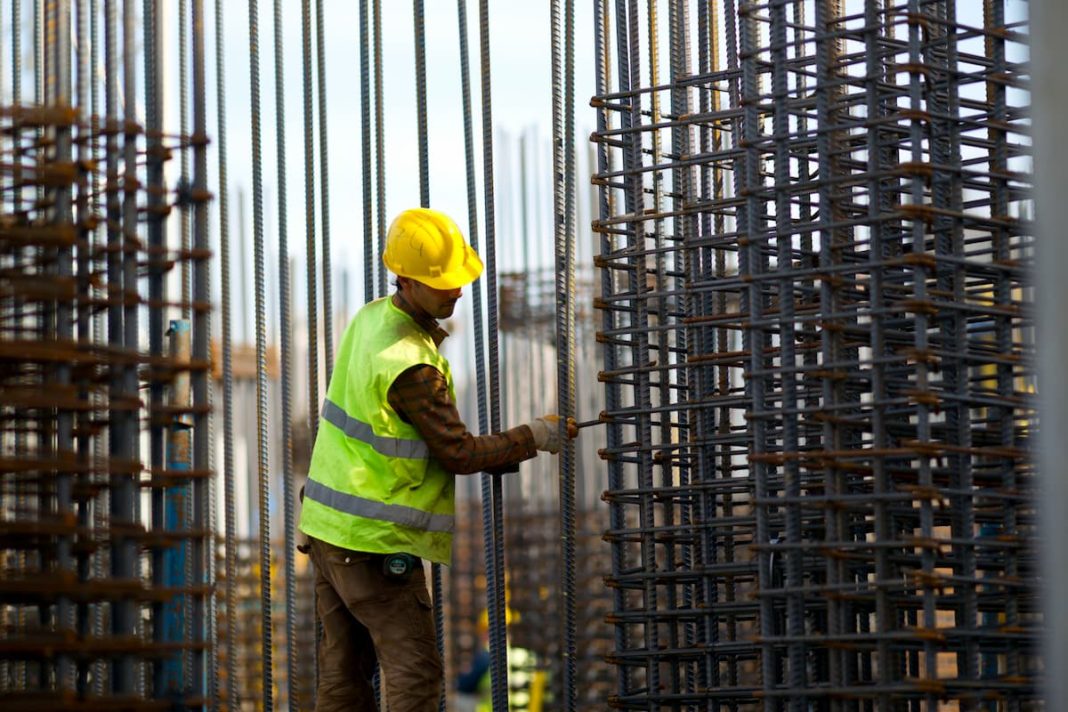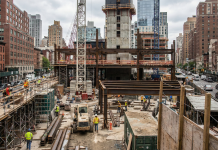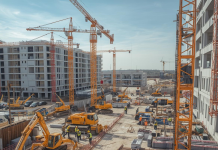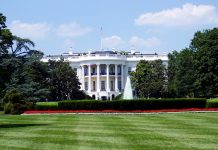In today’s construction news, read about how the United States has reportedly given its approval for South Korea to build a nuclear-powered submarine, but the requirement that the project be built at a US shipyard deviates significantly from South Korea’s long-standing goal of independent design, fuel procurement, and domestic construction capabilities. On the other hand, the most recent report from Coherent Market Insights, “U.S. Construction and Building Plastics Market 2025-2032: Size, Share, and Trends Forecast 2025-2032,” provides a thorough examination of the regional factors influencing this quickly changing sector.
South Korea’s US-made Nuclear Sub
Original Source: S Korea’s nuclear sub made in USA: It’s complicated
The recent announcement by President Donald Trump that South Korea can acquire nuclear-propelled submarines has added new strategic and industrial variables to the nuclear submarine program and the rapidly changing regional balance of power.
South Korea has received US approval to develop a nuclear-powered submarine, but the requirement that construction take place at a US shipyard deviates from its longstanding goal of independent design, fuel acquisition, and domestic construction.
South Korea’s recent strategic planning has been founded on the idea that complete national defense autonomy demands full control over critical military program development and sustainment. Seoul, therefore, questions the immediate and long-term costs and strategic positioning of the new submarine proposal.
We project this planned agreement to have major strategic, diplomatic, industrial, and regional effects on South Korean military and security, as well as the Indo-Pacific region.
The timing is crucial. Northeast Asia is seeing fast military modernization, big power competition, and maritime tensions.
South Korea’s problems with infrastructure, regulations, nuclear fuel policies, and changes in regional security are likely to slow down its plans to create nuclear-powered submarines and a self-sufficient military that can contribute more to maritime security in the Indo-Pacific.
Seoul policymakers have long claimed that South Korea’s modern navy must operate beyond coastal waters due to trade linkages and maritime chokepoints.
Nuclear-powered submarines are needed for underwater endurance and deterrence; hence, South Korea has long prioritized their acquisition.
Obtaining naval-grade enriched uranium fuel has been the greatest obstacle. President Lee, during a recent bilateral conference, urged the US to adopt a stance on enriched uranium supplies, asserting that all other program conditions had been satisfied.
President Trump’s response surprised many South Korean planners and officials. Trump agreed to let South Korea operate its first nuclear submarine if it was American-made. South Koreans were surprised by this conditional approval for shipyard buildings in Philadelphia.
The South Korean defense business owns the shipyard, which lacks submarine manufacturing capacity. This requirement signaled to many in Seoul that Washington was granting consent in principle but also seeking to return significant economic and industrial benefits to the US.
The US leadership portrayed the idea as enhancing South Korea’s naval capabilities, but it was also considered as part of a broader agenda to reinvigorate US shipbuilding capability for national security. Many saw the proposal as inconsistent with South Korea’s long-term ambition to build nuclear submarines in local shipyards.
What to do next confuses South Korean defense policymakers. Since Trump’s proposal affects South Korea’s goal of building a multilevel defense force, they may face difficult decisions.
Several restrictions
South Koreans were thrilled to gain US consent to explore nuclear-powered submarines, but the idea adds industrial and cost complications.
The Philadelphia shipyard where President Trump wants South Korea to build its new submarine was meant for commercial vessels and giant warships, not modern nuclear submarines. Building the requisite facilities will require physical restructuring, hiring and training specialist workers, integrating nuclear safety standards, and careful regulatory control.
South Korean defense analysts estimate that constructing a submarine production line would take three to five years. This new schedule may conflict with South Korea’s maritime policy due to the Indo-Pacific’s fast-changing power balance.
Due to greater labor costs, logistical inefficiencies, and regulatory compliance requirements, building the submarine in the US might cost three to four times more than domestically. South Korea’s shrinking economy may make this proposition unpopular with the political elite.
The US approval’s meaning is unclear beyond time and cost. The decision may allow South Korea to design the submarine while final assembly is in the US, which is unprecedented and impracticable.
If the project involves transferring US submarine reactor technology, export controls are severe. This may involve modifying the Korea–US Nuclear Agreement, which only covers civilian nuclear power and not naval propulsion fuel.
South Korea cannot produce low-enriched uranium or reprocess spent fuel, blocking a full nuclear fuel cycle despite advanced indigenous capabilities. These restrictions hinder regional nuclear regulation.
Exporting or sharing technology related to nuclear submarines requires careful review by several US federal agencies and often needs approval from Congress due to international arms control rules. The process is neither certain nor swift.
The US might heavily supervise South Korean submarine development, potentially limiting strategic autonomy.
President Lee Jae Myung may struggle to gain political support for this idea due to rising political polarization in South Korea, especially among people already disgruntled with trade agreements seen as costly to the economy.
Many believe that even if South Korea is allowed to operate nuclear-powered submarines, it will have limited autonomy in nuclear fuel manufacturing, storage, and fuel cycle research.
North Korea’s nuclear advancements may disappoint South Koreans seeking to bolster their national sovereignty over nuclear technology and fuel production.
Many in South Korea expected that revising the civilian nuclear cooperation agreement would increase nuclear fuel output and management flexibility. Their expectations seem dashed. Limited tweaks may be made to accommodate naval propulsion fuel, but this new proposal is likely to maintain South Korea’s nuclear sovereignty constraints.
The nuclear-propelled submarine project in South Korea was not intended for this.
Strategic dynamics
South Korean nuclear-powered submarines, especially with US industrial engagement, may affect Northeast Asian security.
China, in strategic confrontation with the US, is expected to vehemently oppose any South Korean undersea nuclear propulsion capability enhancement, viewing it as aligned with US maritime containment efforts. China’s close allies, Russia and North Korea, may also respond sharply and implement countermeasures.
Japan and India, which have supported a more active South Korean navy posture in the South China Sea and Indian Ocean, are expected to welcome this development.
Recently, Japan has expressed interest in nuclear submarines. Japan may pursue next-generation propulsion and maritime defense capabilities as policy discussions in Tokyo focus on them. Thus, South Korea’s move may boost Japanese efforts.
This could lead to a new regional naval propulsion rivalry, changing Indo-Pacific maritime dominance. Submarine deployment and capability affect maritime balance in the Indian Ocean; therefore, Indian defense policymakers will closely monitor these developments.
This could improve India–South Korea maritime cooperation in the Indian Ocean and South China Sea across naval warfare zones.
Negotiations over nuclear fuel supply, regulatory permissions, and regional security will determine the outcome of the latest US proposal to permit South Korea’s nuclear-powered submarine acquisition and dock building.
Strategic thinkers and planners in Northeast Asia will closely monitor the proposal since it has long-term consequences for defense sovereignty, alliance management, and the maritime balance of power.
Construction and Building Plastics Will Boom in the U.S.
Coherent Market Insights examines the regional dynamics affecting the rapidly changing U.S. construction and building plastics sector in its latest study, “U.S. Construction And Building Plastics Market 2025-2032 Size, Share & Trends Forecast 2025-2032.” This thorough study covers the competitive landscape, important market segments, value chain analysis, and 2025–2032 technical and regulatory developments. Business leaders, governments, investors, and new market entrants can use the research to identify growth possibilities and manage dangers. Strategic frameworks assist firms in capitalizing on market opportunities, adjusting to changes, and gaining a competitive edge.
This research provides decision-makers with actionable insights, vivid graphics, and validated data-driven solutions for innovation, scalability, and future preparation. The U.S. Construction And Building Plastics Market 2025-2032 is transforming across applications, geographies, and verticals as worldwide demand rises.
➤ U.S. Construction and Building Plastics Market Drivers 2025-2032
Growing consumer demand, technological developments, and favorable regulatory frameworks drive the U.S. Construction And Building Plastics Market 2025-2032. Awareness and acceptance across industries have increased market growth, while product innovation and strategic alliances are improving competitive dynamics. Investment expansion and digital integration are opening new growth possibilities, preparing the market for steady momentum over the projection period.
The scope of the U.S. construction and building plastics market is 2025-2032.
U.S. Construction And Building Plastics Market 2025-2032 is a fast-changing ecosystem of technology, services, and end-use industries. Our comprehensive approach covers the value chain from raw material suppliers and manufacturers to solution integrators and end users in North America, Europe, Asia-Pacific, and emerging markets. The research covers regulatory frameworks, ESG trends, innovation pipelines, and investment outlooks, providing stakeholders with an end-to-end roadmap for growth, risk, and change.
The report analyzes the following players:
• Dow Inc. • BASF SE • DuPont de Nemours • Covestro AG • Eastman Chemical • SABIC • LyondellBasell Industries • Celanese • Huntsman • 3M • ExxonMobil
Complete Report Segmentation and Classification:
• The report covers various sectors such as residential, commercial, industrial, infrastructure, renovation, remodeling, packaging, automotive, and electronics.
US Construction and Building Plastics Market, 2025-2032, by region:
» Northeast » Southeast » Midwest » Southwest » West
Summary of today’s construction news
In simple terms, negotiations over the supply of nuclear fuel, regulatory permissions, and regional security reactions will determine the final course of the latest US proposal to permit South Korea to purchase nuclear-powered submarines while mandating construction at a US shipyard. The idea is expected to be closely watched by strategic thinkers and planners in the region as it progresses because it has long-term consequences for defense sovereignty, alliance management, and the changing maritime balance of power in Northeast Asia.
On the other hand, the U.S. Construction and Building Plastics Market 2025-2032 is expanding dramatically across applications, geographies, and verticals as a result of rising global demand. The U.S. construction and building plastics market is expected to develop between 2025 and 2032 due to a mix of favorable regulatory frameworks, technical advancements, and changing customer demand.








